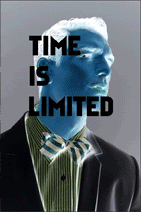But they never found the body.
Now, it has returned!
It's out for blood!
Yes readers, it's that time once again for the Monster of the Month. August's creature is certainly the most unusual that the Hyper Kitchen has ever come across. Today's dish is offal of a terrifying variety. It is our pleasure to introduce to you: the Chicken Heart.
 The Chicken Heart was featured in a 1937 episode of the old time radio program Lights Out. Originally produced by NBC, Lights Out was an anthology of horror stories and weird tales. The program was known for bizarre subject matter, including telepathic amoebas and a mysterious fog that turned people inside out. Characters were often messily devoured, torn apart, dismembered, or burned alive and Lights Out depicted these scenes replete with gruesome sound-effects.
The Chicken Heart was featured in a 1937 episode of the old time radio program Lights Out. Originally produced by NBC, Lights Out was an anthology of horror stories and weird tales. The program was known for bizarre subject matter, including telepathic amoebas and a mysterious fog that turned people inside out. Characters were often messily devoured, torn apart, dismembered, or burned alive and Lights Out depicted these scenes replete with gruesome sound-effects.It attained considerable popularity.
In one of its most well-known episodes (penned by future television and film writer Arch Oboler) a disembodied chicken heart is kept alive and beating at the "Research Institute" under the study of one Dr. Alberts. For reasons that are not elaborated upon, the Chicken Heart begins to grow uncontrollably, doubling in mass every hour. Eventually the Heart expands to grotesque size and has become a sprawling mass of uncoordinated "cannibal flesh" that consumes everyone in reach. Dr. Alberts urges city officials to evacuate the area and bomb the Chicken Heart, but his warnings are ignored. The Heart has sprouted "tentacles of protoplasm" that ensnare the guns of the National Guardsmen, and then the Guardsmen themselves. At the end of the episode, the Chicken Heart has nearly crushed the entire city under its titanic bulk and it has eaten most of the inhabitants. As Dr. Alberts attempts to escape in an airplane, the deafening beat of the Chicken Heart can be heard echoing through the ruined city. The good doctor and his pilot meet their doom after the plane's engine cuts out and they plummet straight into the pulsating ocean of meat.
Even today, when carnivorous blobs and city-wrecking freaks have become commonplace, the Chicken Heart towers above the competition as a bizarre and truly original monster. However, it may very well have faded into obscurity had it not been for comedian Bill Cosby. Having listened to Lights Out as a young boy, the Chicken Heart made such an impression on Cosby that he devoted a segment to the beast on his 1966 album Wonderfulness. Thanks to his parodic re-telling of the episode, the Chicken Heart endures.
It's a weird world, isn't it?
Would you like to know more?
You can listen the chicken heart program in its entirety here


















